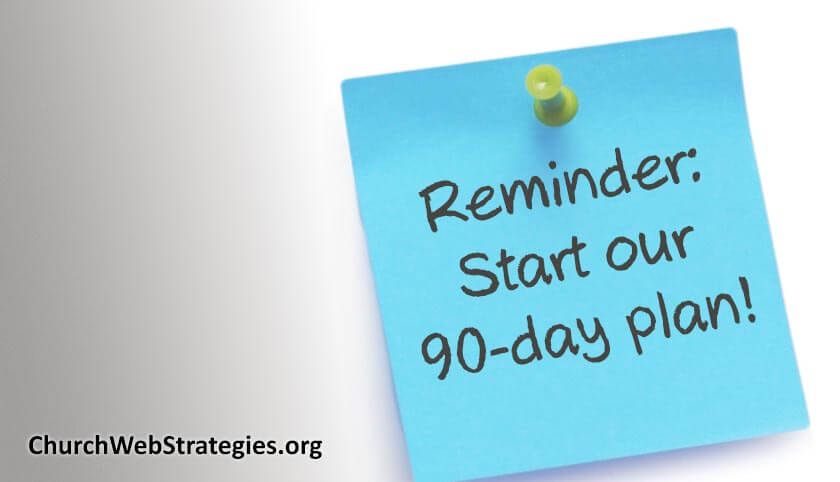Working on a church communications team can be both exciting and intimidating. You cannot wait to have an impact. You are now the digital voice of your church. Getting off to a good start is important. But where does that journey begin? Where will that path take you? Start with understanding your website. This article is based on recent success in my professional career.
This is a plan for taking over a new or lagging digital ministry. Yet even if you have been doing this for a while, consider each of these steps. If you have not done any at your church, think of the new year. Start January with a time of reflection and learn about your website.
The company I work for is over 40 years old. It started in the age of paper catalogs. Like many companies, this shift to digital was difficult. The website had many owners over the years. Several unfinished projects plague integration and functionality. With no overlap with my predecessor, I needed a quick plan for improvement. This is that plan.
Internal Interviews
Even if you have been on staff in another role for years, there are things to learn. You likely had never explored how digital could lend itself to every aspect of the church. Fix that by conducting internal interviews. Many of your conversations here will inform later stages of this plan. Plus you need to establish yourself as someone who is listening to their concerns. They all want to see their ministries grow. Either they already have ideas about how to integrate digital tools. Or they should be excited to hear your thoughts.
I was lucky to talk with our customer service and technical support representatives. They spend all day talking with customers on the phone and live chat sessions. You have similar resources at your church. Your administrative assistant, ushers, greeters, and pastors regularly talk with members. Get their input first, and then move on to other supporting roles in your church.
Persona Development
Personas are fake people created from real data. They help you focus design conversations about the user. Start by reviewing any existing documentation. If you do not have any personas, you can create a few in a little time. Now use data from your internal interviews to update your personas. This may seem tedious at first. But you need to understand your audience before you design and/or write.
Again, my efforts at work had help. There were existing personas I could start with. The problem was that there were too many. I decided to not use personas from job titles and industries. Instead, I focused on specific behaviors. They were well received and had everyone on the team thinking about our customers.
Digital Audit
Depending on your digital ministries, this can be a huge undertaking. The purpose is to understand what exists on your various platforms. For more depth, determine who is responsible for the content. This, of course, includes both your website and your social media platforms. Your website will likely be the larger undertaking. A tool like a content strategy document would help guide your actions. The main goal is to understand all your properties. Plus this is the groundwork for creating page templates.
This is my current project for the website I work with. It is quite large because of the number and types of products we sell. Plus the company has an extensive collection of how-to articles and blogs. Yet this effort is helping us solve many problems. I am getting a good feel for the various site elements and components. This will be essential when I later create standardized page layout templates.
Action Item
If you do not yet have a 90-day plan, make one. This should be right on the heels of making your new onboarding plan. It is aimed at helping you learn about several aspects of the experience you are trying to deliver. After any big holiday, like Easter or Christmas, take time to reflect. The steps outlined in this article help you understand how to improve for the next big event. Learn, pray, and then get to work!

